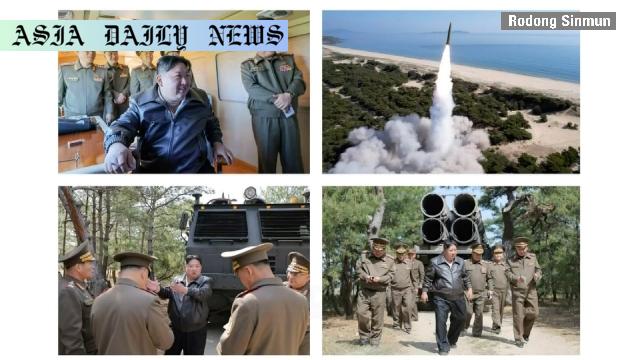Ballistic Missile Drill: North Korea conducts tactical drill involving advanced artillery systems under Kim’s oversight.

Introduction to North Korea’s Ballistic Missile Drill
North Korea continues to emphasize its military advancements under the direct supervision of its highly influential leader, Kim Jong Un. According to the ruling Workers’ Party newspaper Rodong Sinmun, a comprehensive ballistic missile and long-range artillery strike drill was conducted recently, drawing global attention. This exercise underlines the nation’s focus on enhancing its nuclear capabilities through modern technology and robust military training.
Central to the drill was the employment of a 600-millimeter multi-layer rocket system and the cutting-edge Hwasong-11-Ka tactical ballistic missile, showcasing North Korea’s persistent progress in weaponry. These tests, as described by state-controlled media, are training tools meant to position the country toward enhancing its nuclear counterattack posture.
Focus on Nuclear Counterattack and Combat Readiness
The recent drill by North Korea laid a strategic emphasis on equipping soldiers with the expertise to seamlessly transition into a nuclear counterattack stance. Reports specifically highlighted Kim Jong Un’s focus on improving combat readiness as part of the broader effort to integrate nuclear deterrence into national defense strategies. By simulating combat conditions and testing systems under operational strain, North Korea aligns its demonstration with readiness to counter perceived adversarial threats.
This focused emphasis on a nuclear deterrent appears as an integral strategy in reinforcing their power projection both regionally and globally. Experts believe it’s a statement that tactical nuclear advancements remain an enduring priority.
Global Perception and South Korea’s Observations
The global community, particularly those in East Asia, have taken notice of North Korea’s growing technological expertise in missile systems. South Korea observed short-range ballistic missile launches during the drill, raising concerns about their potential links to arms exports to Russia. Such actions, if connected, may not only exacerbate global tensions but could also prompt international sanctions or heightened scrutiny.
For South Korea and its allies, these tests may be perceived as provocations aimed at leveraging their threat of nuclear warfare. Furthermore, this episode spotlights the multi-layered dynamics of North Korea’s military strategy and its implications on regional and international peace.
Conclusion: A Stark Reminder of Evolving Threats
North Korea’s continuous investment in weapons systems underlines its resolve to maintain a potent defense strategy. Kim Jong Un’s leadership has steered the nation toward refining both its tactical and strategic capabilities, including the repeated demonstration of nuclear counterstrike readiness.
For the international community, this serves as a reminder to maintain vigilance, engage in constructive dialogue, and address tensions with consideration of the broader security implications. Understanding North Korea’s motives and ensuring stability in the region remain critical.
Commentary
The Significance of Leadership in Military Demonstrations
Kim Jong Un’s hands-on approach in overseeing North Korea’s ballistic missile testing demonstrates the country’s calculated methodology toward achieving its strategic objectives. By personally supervising the drill, Kim not only solidifies his role as the primary authority but ensures that his directives resonate directly with the military force. This direct involvement also signals the importance North Korea places on showcasing an image of readiness and might to its adversaries on the world stage.
Implications for Regional Stability
North Korea’s latest actions could undoubtedly heighten tensions in East Asia. Its advancements in nuclear and ballistic missile technology pose a significant challenge to peace and stability in the region. South Korea’s monitoring of short-range ballistic missiles and speculation about Russian arms linkages brings another unsettling dimension to the scenario. Such developments, absent diplomatic resolved, risk igniting further unease among neighboring countries and allies in the region.
Looking Ahead: Balancing Preparedness and Diplomacy
As the global community seeks to address this evolving landscape, the dual approach of preparedness and negotiation becomes essential. Stakeholder nations, including South Korea, Japan, and the US, must prioritize maintaining a balance between military readiness and pursuing peaceful dialogue. Conflict cannot be the desired outcome, and dialogue avenues—direct or indirect—must carved to mitigate these recurring disruptions.
Kim Jong Un’s ballistic missile drill should prompt renewed discussions on arms control and collaborative security efforts. The global powers must emphasize solutions that harmonize safeguarding interests while steering clear of actions that exacerbate geopolitical tensions.


